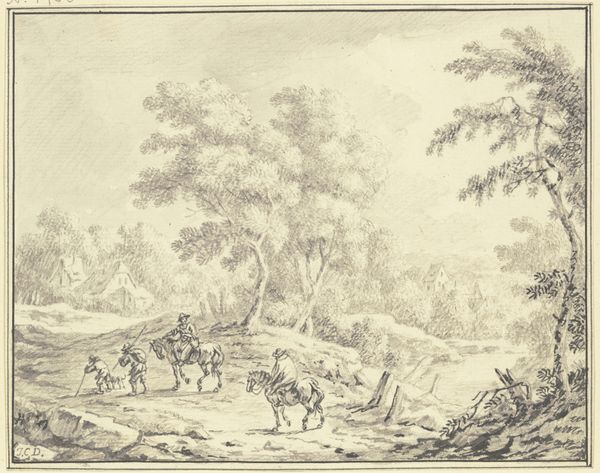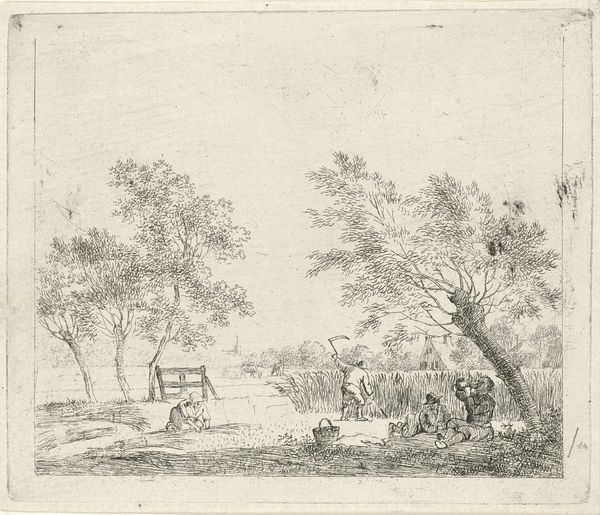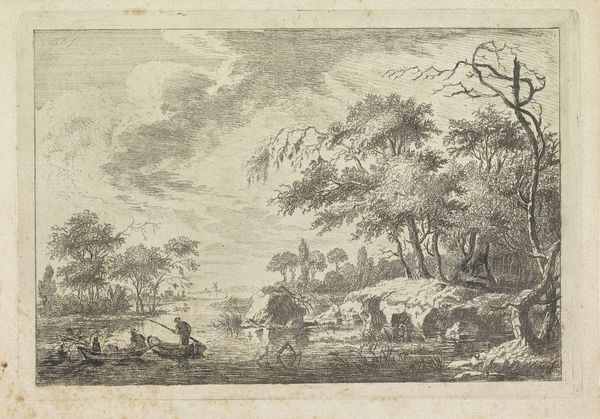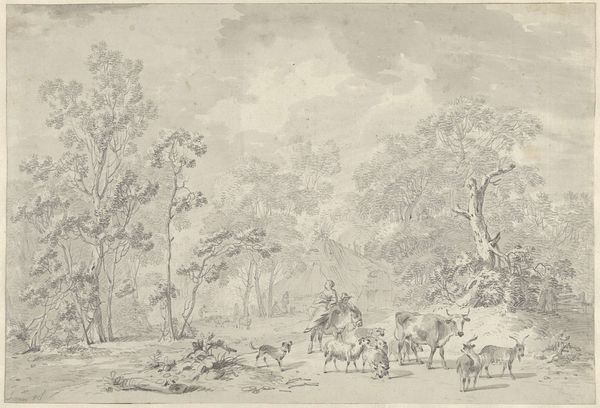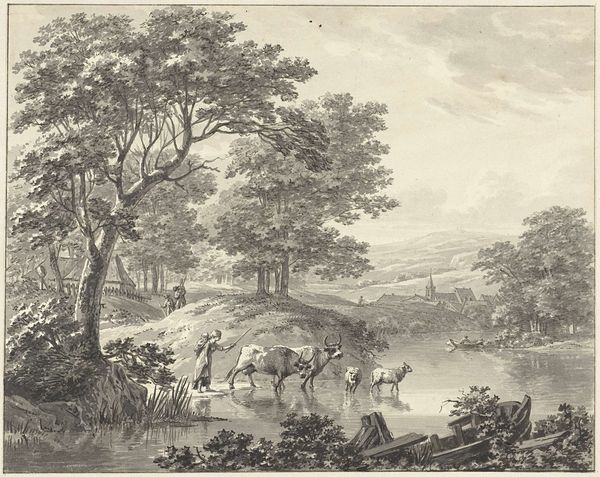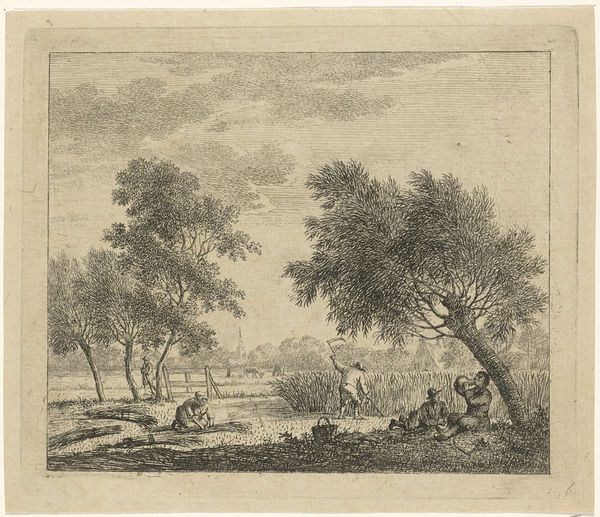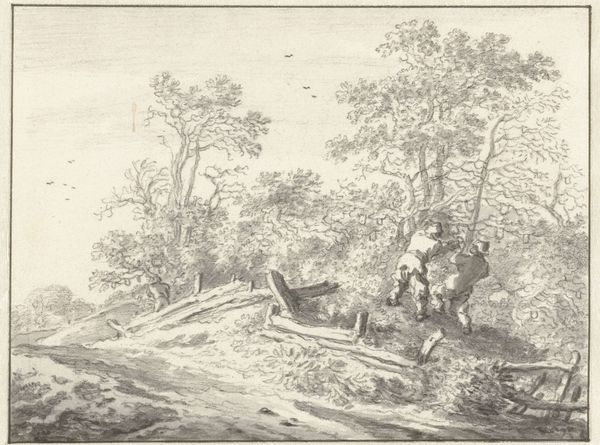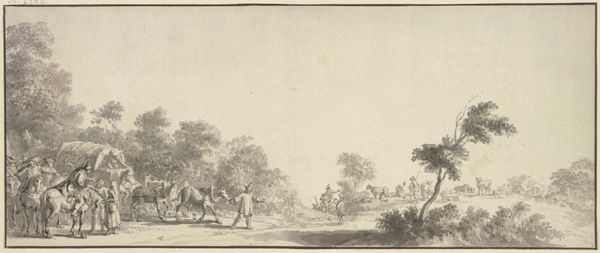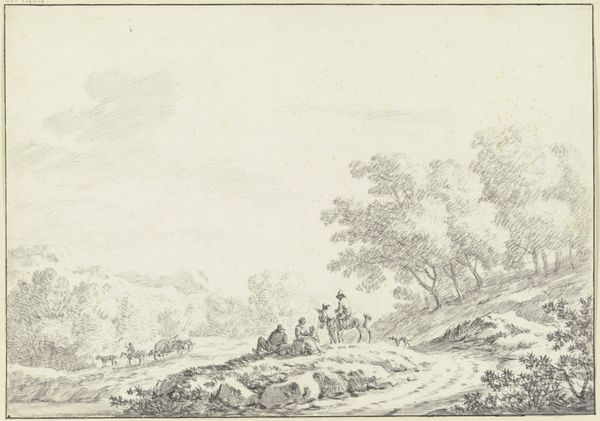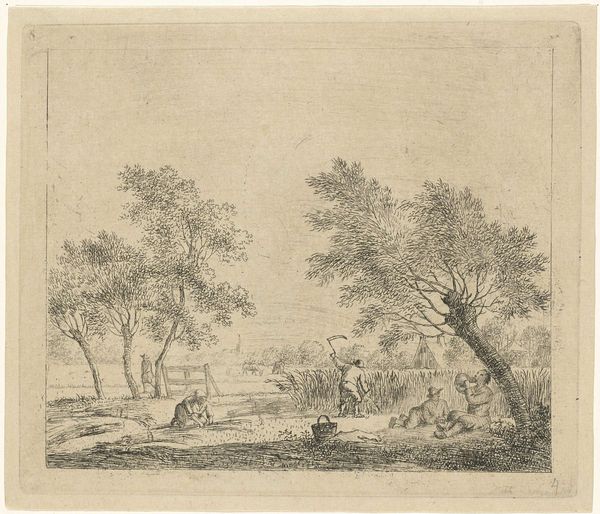
drawing, pencil
#
pencil drawn
#
drawing
#
landscape
#
pencil drawing
#
pencil
#
genre-painting
#
academic-art
#
rococo
Dimensions: height 140 mm, width 186 mm
Copyright: Rijks Museum: Open Domain
Curator: Let's take a closer look at "Landschap met reizigers op een landweg," or "Landscape with Travelers on a Country Road," a drawing rendered in pencil by Johann Georg Wagner sometime between 1754 and 1767. Editor: My immediate feeling is one of subdued pastoral harmony; the monochromatic palette lends a soft, almost melancholic air to the scene of everyday labor and travel. Curator: Indeed. Wagner, working within the Rococo style, frequently depicted genre scenes. We should remember the rococo's association with aristocratic taste even as it portrays these scenes of rural life. It wasn't necessarily about realistic representation but about constructing an idealized version of the countryside, pleasant for consumption. Editor: Absolutely. It speaks volumes about power dynamics. The artist, and by extension the viewer, occupies a position of privilege, observing and aestheticizing the labor of others. The slight, almost whimsical rendering of the figures flattens any potential for their individual narratives to emerge. Where is the grit? The struggle? Curator: Exactly. There is an active creation of pleasant art; a vision tailored for elite consumption. Wagner is interested in a general impression of tranquility and ease. Consider also the way he uses the pencil – fine, controlled lines – and how it translates to a delicate depiction of nature that is equally idealized and manicured. Editor: I think the composition reinforces that sense of constructed harmony. The gentle curve of the road leads the eye into the distance. But also observe the figures. Are they content? The person walking with a large carrier seems almost weighed down. Is the rider on the horse on the other side looking the other way so he is disassociated from this labor? I feel there’s an element of erasure taking place. Curator: That erasure might indeed be part of the work’s function: to present an unblemished view of country life, which then, as now, often hides stark inequalities. These landscapes weren't simple mirrors but active agents in shaping societal perception and perhaps suppressing questions about social justice. Editor: This opens my eyes to the subtle layers within what appears to be a charming landscape. I can walk away questioning my own positionality as a viewer. Curator: Exactly. The visual pleasure here encourages us to consider the context. Art’s connection to socio-economic dynamics of past eras continues to shape contemporary realities, and in confronting them, maybe it could change a few minds.
Comments
No comments
Be the first to comment and join the conversation on the ultimate creative platform.
